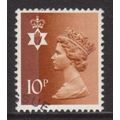Girne / Kyrenia, Turkish N Cyprus - harbour - postcard c.1970s
- Condition : Used
- Dispatch : 2 Days
- Brand : None
- ID# : 122803988
- Quantity : 1 item
- Views : 1405
- Location : United Kingdom

- Seller : justthebook (+1704)
- Barcode : None
- Start : Wed 04 Dec 2013 06:04:57 (EDT)
- Close : Run Until Sold
- Remain : Run Until Sold
Checks/Cheques
 for 1 item(s) edit
for 1 item(s) edit
Shipping Calculator
More Listings from This Seller view all
Seller's Description
- Postcard
- Picture / Image: Girne [or Kyrenia], Northern [Turkish] Cyprus - c.1970s
- Publisher: Yurt
- Postally used: no
- Stamp: n/a
- Postmark(s): n/a
- Sent to: n/a
- Notes / condition:
Please ask if you need any other information and I will do the best I can to answer.
Image may be low res for illustrative purposes - if you need a higher definition image then please contact me and I may be able to send one.
------------------------------------------------
Postage & Packing:
UK (incl. IOM, CI & BFPO): 99p
Europe: £1.60
Rest of world (inc. USA etc): £2.75
No additional charges for more than one postcard. You can buy as many postcards from me as you like and you will just pay the fee above once. (If buying postcards with other things such as books, please contact or wait for invoice before paying).
Payment Methods:
UK - PayPal, Cheque (from UK bank) or postal order
Outside UK: PayPal ONLY (unless otherwise stated) please. NO non-UK currency checks or money orders (sorry).
NOTE: All postcards are sent in brand new stiffened envelopes which I have bought for the task. These are specially made to protect postcards and you may be able to re-use them. In addition there are other costs to sending so the above charge is not just for the stamp!
I will give a full refund if you are not fully satisfied with the postcard.
----------------------------------------------
Text from the free encyclopedia WIKIPEDIA may appear below to give a little background information (internal links may not work) :
*************
Kyrenia (Greek: ?e???e?a;Turkish: Girne) is a town on the northern coast of Cyprus, noted for its historic harbour and castle. Internationally recognised as part of the Republic of Cyprus, it is under the control of the de facto Turkish Republic of Northern Cyprus and capital of its Girne District. Once predominantly inhabited by Greek Cypriots, Kyrenia's population consists now largely of Turkish Cypriots, British people and Turkish immigrants.
Kyrenia dates to the end of the Trojan War and it was founded by the Achaeans, ancient Greek colonists from the Peloponnese who established towns in the district. Evidence from archaeological sites excavated in and around the town of Kyrenia evidence settlement since the Neolithic period, 5800–3000 BC. Mycenaean (Achaean) tombs dating from 1300-500s (decade) BC and geometric artefacts have also been discovered. A fine climate, fertile soil and an abundance of water offered ideal conditions for the town's early settlement.
Cepheus from Arcadia is believed to be the founder of the town of Kyrenia. A military leader, he arrived at the north coast of the island bringing with him many settlers from various towns in Achaea. One such town, located near present-day Aigio in the Peloponnese, was also called Kyrenia. East of Kyrenia lies the ""Coast of Achaeans"". It was at Kyrenia, according to Strabo, that Teucer came first ashore, to found the ancient Kingdom of Salamis after the Trojan war.[1]
The earliest reference made to the town of Kyrenia is found, together with that of the other seven city kingdoms of Cyprus, in Egyptian scripts dating from the period of Ramesses III, 1125-1100s (decade) BC.
From its early days of settlement, Kyrenia's commerce and maritime trade benefited enormously from its proximity to the Asia Minor coast. Boats set sail from the Aegean islands, traveled along the Asia Minor coast, and then crossed over the short distance to the northern shores of Cyprus to reach the two city kingdoms of Lapithos and Kyrenia. This lively maritime activity (late 4th or early 3rd century BC) is evident in an ancient shipwreck discovered by Andreas Kariolou in 1965, just outside Kyrenia harbour. The vessel's route along Samos, Kos, Rhodes, the Asia Minor coastline and then Kyrenia, demonstrates the town's close maritime relations with other city kingdoms in the eastern Mediterranean.
During the succession struggle between Ptolemy and Antigonus that followed Alexander the Great's death in 323 BC, Kyrenia was subdued under the rule of the kingdom of Lapithos that allied itself with the Antigonid dynasty. Diodorus Siculus(19.79) observes that in 312 BC. Ptolemy arrested Praxipos the king of Lapithos and the king of Kyrenia. Once the Ptolemies were successful in dominating the whole island, all city kingdoms were abolished. Kyrenia however, because of its maritime trade, continued to prosper. In the 2nd century BC, it is cited as one of six Cypriot towns which were benefactors to the Oracle at Delphi, that is, it received its special representatives who collected contributions and gifts. The town's prosperity at this time is also evident from its two temples, one dedicated to Apollo and the other to Aphrodite, and from the rich archeological finds dating from the Hellenistic period excavated within the present-day town limits.
The Romans succeeded the Ptolemies as rulers of Cyprus and during this time Lapithos became the administrative centre of the district. The numerous tombs excavated and the rich archeological finds dating from this period indicate however, that Kyrenia continued to be a populous and prosperous town. An inscription found at the base of a limestone statue dating from 13–37 AD, refers to ‘Kyrenians Demos' that is, the town's inhabitants. Here as everywhere else, the Romans left their mark by constructing a castle with a seawall in front of it so that boats and ships could anchor in safety.
Christianity found fertile ground in the area. The first Christian martyrs used the old quarries of Chrysokava, just east of Kyrenia castle, as catacombs and cut-rock cemeteries which are considered among the island's most important specimens of this period. Later, some of these caves were converted into churches and feature beautiful iconography, the most representative of which is that found at ‘Ayia Mavri.' From these early days, the town of Kyrenia was an episcopal see. One of its first bishops, Theodotus, was arrested and tortured between 307–324, under the reign of Licinius. Though the persecution of Christians officially ended in 313, when Constantine I and his co-emperor, Licinius, issued the Edict of Milan which mandated toleration of Christians in the Roman Empire and freedom of worship, Theodotus martyrdom and persecution only ended in 324 and it is this event that the Church annually commemorates on March 2.
With the division of the Roman Empire into an eastern and a western empire, in 395 Cyprus came under the Byzantine emperors and the Greek Orthodox Church. The Byzantine emperors fortified Kyrenia's Roman castle and in the 10th century, they constructed in its vicinity a church dedicated to Saint George, which the garrison used as a chapel. Then, when in 806, Lambousa was destroyed in the Arab raids, Kyrenia grew in importance because its castle and garrison offered its inhabitants protection and security. Isaac Komnenos of Cyprus, the island's last Byzantine governor, sent his family and treasures to the castle for safety in 1191 when King Richard I of England went to war with him and became the island's new master.
Richard's rule was not welcomed in Cyprus so he sold the island first to the Knights Templar, and then in 1192, to Guy of Lusignan. Under Frankish rule, the villages of the district of Kyrenia became feudal estates and the town became once again the administrative and commercial centre for its region. The Lusignans enlarged the castle, built a wall and towers around the town, and extended the fortifications to the harbour. They also fortified the Byzantine castles of Saint Hilarion, Bouffavento and Kantara, which, together with Kyrenia Castle, protected the town from land and sea attacks. Kyrenia castle played a pivotal role in the island's history during the many disputes among the Frankish kings, as well as the conflicts with the Genoese. On numerous occasions the castle came under siege, but it never capitulated.
In 1489, Cyprus came under Venetian rule. The Venetians modified Kyrenia Castle to meet the threat that the use of gunpowder and cannons posed. The castle's royal quarters and three of its four thin and elegant Frankish towers were demolished and replaced by thickset circular towers that could better withstand cannon fire. These new towers, however, were never put to the test. In 1571, the castle and the town surrendered to the Ottoman army.
Under Ottoman rule, Kyrenia district was at first one of four, then one of six, administrative districts of the island and the town remained its administrative capital. The town's fortunes declined however as it was transformed into a garrison town. The Christian population was expelled from the fortified city, and no one was allowed to reside within the castle other than the artillerymen and their families. These men coerced the town's inhabitants and those of the surrounding villages, Christian and Muslim alike, with their arbitrary looting and crimes. The few local inhabitants who dared to stay were merchants and fishermen whose livelihood depended on the sea. They built their homes outside the city wall, which through time, neglect and disrepair, turned to ruin. The rest of the inhabitants moved further out to the area known as Pano Kyrenia or the ‘Riatiko' (so called because it once belonged to a king) or fled further inland and to the mountain villages of Thermeia, Karakoumi, Kazafani, Bellapais and Karmi.
The town revived again when bribes and gifts paid to local Turkish officials caused them to permit local maritime trade with Asia Minor and the Aegean islands to resume. In 1783, the church of Chrysopolitissa was renovated. Then in 1856, following the Hatt-i Humayun, which introduced social and political reform and greater religious freedom for the various peoples of the Ottoman Empire, the church of Archangel Michael was rebuilt on a rocky mount overlooking the sea. At about this time, many of the Christian inhabitants of the surrounding villages re-established themselves in the town. Local agriculture and maritime trade, particularly the export of carobs to Asia Minor, allowed the people of Kyrenia to have a comfortable living, and some even to educate their children and pursue other cultural activities.
In 1878, following a secret agreement between the British and Ottoman governments, the island was ceded to Great Britain as a military base in the eastern Mediterranean. At first, Great Britain did not undertake major administrative changes, so Kyrenia remained the district's capital. A road was constructed through the mountain pass to connect the town to the island's capital, Nicosia, and the harbour was repaired and expanded to accommodate increasing trade with the opposite coast. The town's municipal affairs were put in order and the municipal council took an active role in cleaning and modernizing the town.
In 1893, a hospital was built through private contributions and effort. By the 1900s (decade), Kyrenia was a buzzing little town with a new school building, its own newspaper, social, educational and athletic clubs. It was also a favoured vacation spot for many wealthy Nicosia families. Many homes were converted into pensions and boardinghouses and in 1906, the first hotel, ""Akteon"", was built by the sea.
These first decades of British rule however, also saw increased economic hardship for the population. High taxation, frequent droughts and a world economic depression were precipitating factors for a mass exodus of people from the town and district, first to Egypt and then to the United States.
In 1922, the episcopal see of Kyrenia relocated back to the town after the completion of a new metropolitan building. That same year, the Greco-Turkish war brought to a halt all trade with the opposite coast causing a serious economic depression.
Costas Catsellis, a young repatriate from the USA, came to the rescue by building the town's first modern hotels, the Seaview in 1922 and the Dome in 1932. Kyrenia's mild climate, picturesque harbour, numerous archeological sites, panoramic views that combined sea, mountains and vegetation, coupled with modern amenities, soon attracted many travellers and Kyrenia's economy revived through tourism.
After the Second World War, more hotels were built and the town remained a favoured vacation spot for people from Nicosia and foreign travellers alike. To the town's Greek and Turkish inhabitants were added many from Great Britain, who chose Kyrenia as their permanent place of residence.
In 1960, Cyprus gained its independence from Great Britain. However, the intercommunal conflict that broke out in 1963–64 between the island's Greek and Turkish population again eroded Kyrenia's prosperity. While skirmishes in Kyrenia were minimal, the Turkish Resistance Organisation did blockade the Kyrenia-Nicosia road and occupy Saint Hilarion castle.
Despite these difficulties, the 1960s and early 1970s was a period of lively cultural and economic activity. A new town hall was built and a Folklore Museum established. The ancient shipwreck[2] already alluded to was reassembled, together with all its amphorae and cargo, and permanently exhibited at the castle. The number of new hotels and tourists multiplied and a new road was constructed in the early 1970s connecting the town to Nicosia from the east. The town's cultural activities greatly increased. Other than the many traditional cultural and religious fairs and festivals annually celebrated, flower shows, yachting races, concerts and theater performances were organized. Kyrenia, the smallest of Cypriot towns, was undoubtedly the island's most precious jewel.
The town's inhabitants, Greek, Turk, Maronite, Armenian, Latin and British peacefully coexisted and cooperated in their daily affairs and the town had grown beyond its two historic neighbourhoods of Kato (Lower) Kyrenia and Pano (Upper) Kyrenia. It expanded towards the mountain slopes to form the new neighbourhood of ""California"", and eastward it had just about reached the outskirts of Thermia, Karakoumi and Ayios Georgios.
On July 20, 1974, the Turkish army invaded Cyprus in response to a coup d'état carried out by EOKA B and the Greek military junta of 1967–1974,[3] landing at 5-Mile point, east of Kyrenia. Gaining ground against the local forces, the Turkish army reached Kyrenia on 22 July 1974 during the UN-sponsored cease fire.[citation needed] The majority of towns Greek Cypriot and Maronite Cypriot population and all of its Armenian Cypriot and Latin population fled from the advancing Turkish army to the southern part of the island. A small group of Greek Cypriots who tried to remain within Kyrenia were kept in the Dome Hotel until October 1975, after which they were taken to Bellapais. Subsequently, Turkish Cypriots displaced from elsewhere in Cyprus and immigrants from Turkey moved in, with the result that the town's present ethnic make-up is predominantly Turkish and Turkish-Cypriot.[4][5]
type=printed postcards
theme=topographical: rest of the world
sub-theme=europe
county/ country=cyprus
number of items=single
period=1945 - present
postage condition=unposted
Listing Information
| Listing Type | Gallery Listing |
| Listing ID# | 122803988 |
| Start Time | Wed 04 Dec 2013 06:04:57 (EDT) |
| Close Time | Run Until Sold |
| Starting Bid | Fixed Price (no bidding) |
| Item Condition | Used |
| Bids | 0 |
| Views | 1405 |
| Dispatch Time | 2 Days |
| Quantity | 1 |
| Location | United Kingdom |
| Auto Extend | No |




















